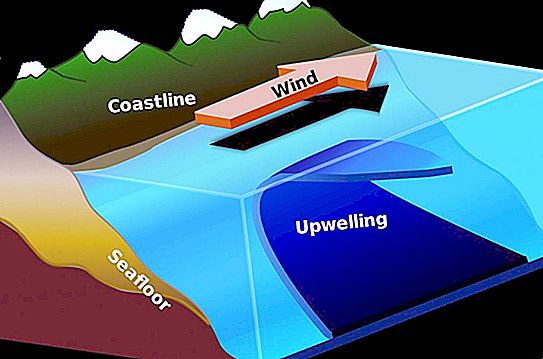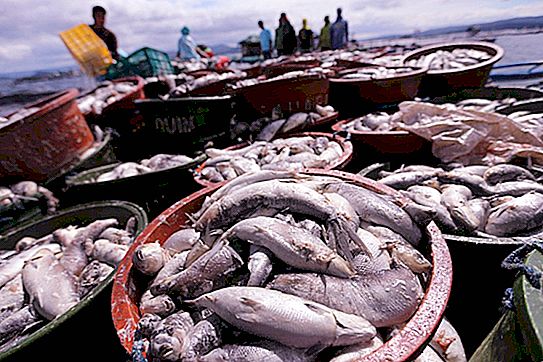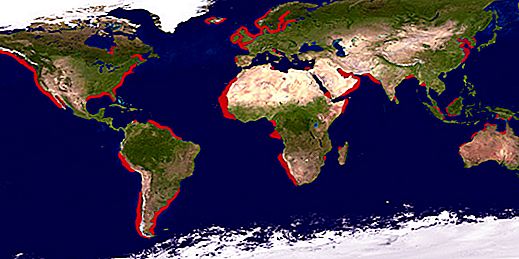The ocean is a global and holistic geosystem within which water masses are in constant motion. And these movements are not limited to currents, ebbs and flows. This article will focus on such an interesting process as upwelling. What it is? What is the mechanism of formation of these processes? And where in the oceans are the main areas of upwelling? Here you will find answers to all these questions.
Upwelling is … Definition of the term
The term itself is borrowed from the English language. The word upwelling can be translated as "breaking up." What is the scientific interpretation of this term?
Upwelling is the rise of deep layers of ocean water to the surface. Most often, these processes are characteristic of the western coast of the continents, but can be observed almost anywhere in the World Ocean (including inland seas). In oceanology, several types of upwelling are distinguished:
- wind (observed in the open sea);
- coastal;
- vortex;
- topographic;
- cyclonic (caused by the passage of a tropical cyclone).
There is also a process opposite to upwelling - downwelling.
Artificial upwelling is a special type of upwelling provoked by a person using special devices. They use the thermal energy of the Ocean or the kinetic energy of the waves to move water masses to the surface.
Upwelling Process: Key Features
Upwelling is also partly a meteorological process. After all, it is closely related to changes in weather and climate conditions. The main condition for the occurrence of upwelling is a strong and continuous wind blowing parallel to the shore (or at a slight angle to it). In this case, the warm surface layer is driven off, and the colder masses of ocean waters rise from its depth.

How much does the surface water of the Ocean cool when upwelling? The range of temperature differences is quite wide - from 1-2 to 10-15 degrees Celsius. Sometimes very sharp jumps in temperature occur: from 24-25 to 8-10 ° C in just a few hours.
What else is characterized by upwelling? During this process, a huge amount of phosphorus, nitrogen and carbon dioxide are thrown onto the surface of the ocean along with deep waters. All these compounds stimulate the rapid development of phytoplankton, which crustaceans like to feast on. The latter, in turn, serve as food for many bone fish. Thus, in the upwelling zones, the ichthyofauna is always richer than in other parts of the ocean.

Coastal upwelling
The most famous and most studied type of upwelling is coastal. After all, it directly affects human activity, forming the most productive fishing areas in the oceans. The most pronounced coastal upwelling off the coast of Chile and Peru, in the Arabian Sea, as well as on the west coast of South Africa.
In the formation of coastal upwelling, the so-called Coriolis force plays an important role. As a result of its impact, all wind currents deviate to the left in the Southern Hemisphere and to the right in the Northern Hemisphere.
In areas of active coastal upwelling, lower air temperatures are observed (in the layers of the troposphere adjacent to the water surface). Thick vertical clouds are not typical for such places, since all moisture is concentrated below. But there are often fogs and a thin layered veil, spreading horizontally above the water surface. Over areas of coastal upwelling, quite arid microclimate is very often formed.
What are the patterns in the distribution of upwelling zones in the oceans (Indian, Pacific, Atlantic and South)? This will be discussed later.
Geography of upwelling in the oceans
According to estimates of oceanologists, upwelling zones account for only about 0.1% of the total area of the oceans. Most of them are located along the western coast of the continents (see map below). These areas are extremely rich in fish, and on the coastal areas there are a huge number of birds that actively absorb this fish. Something remains for the man. According to statistics, almost half of the global fish catch falls on upwelling zones.

Intense upwelling is also observed in those areas of the oceans where constant trade winds blow. The driving effect created by them promotes the active and mixing of deep and surface water layers. In the Pacific and Atlantic oceans in such zones, as a rule, compensatory cold currents arise (for example, Peruvian, California, Canary and others).
Upwelling is noted in the Indian Ocean. In particular, off the northwestern coast of Australia, in the Arabian Sea and along the coast of the Hindustan Peninsula.
An excellent location for studying upwelling processes is the Southern Ocean. Along the coast of Antarctica, constant and very powerful westerly winds blow here, as a result of which large volumes of deep ocean waters rise to the surface.
Peruvian upwelling
Perhaps the most typical example of upwelling in the oceans is Peruvian. It provides about 20% of the world's fish catch. It is here that the cold flow of the same name originates. Peruvian upwelling is characterized by blurred fronts and minimal temperature gradients (not more than 0.1-0.2 ° C / km). Vertical interlayers with temperature inversions are also not observed here. The influence of the Peruvian upwelling on the climate of the coastal territory is most pronounced and pronounced. As you know, it was here that the Atacama Desert was formed - one of the most arid places on our planet.





